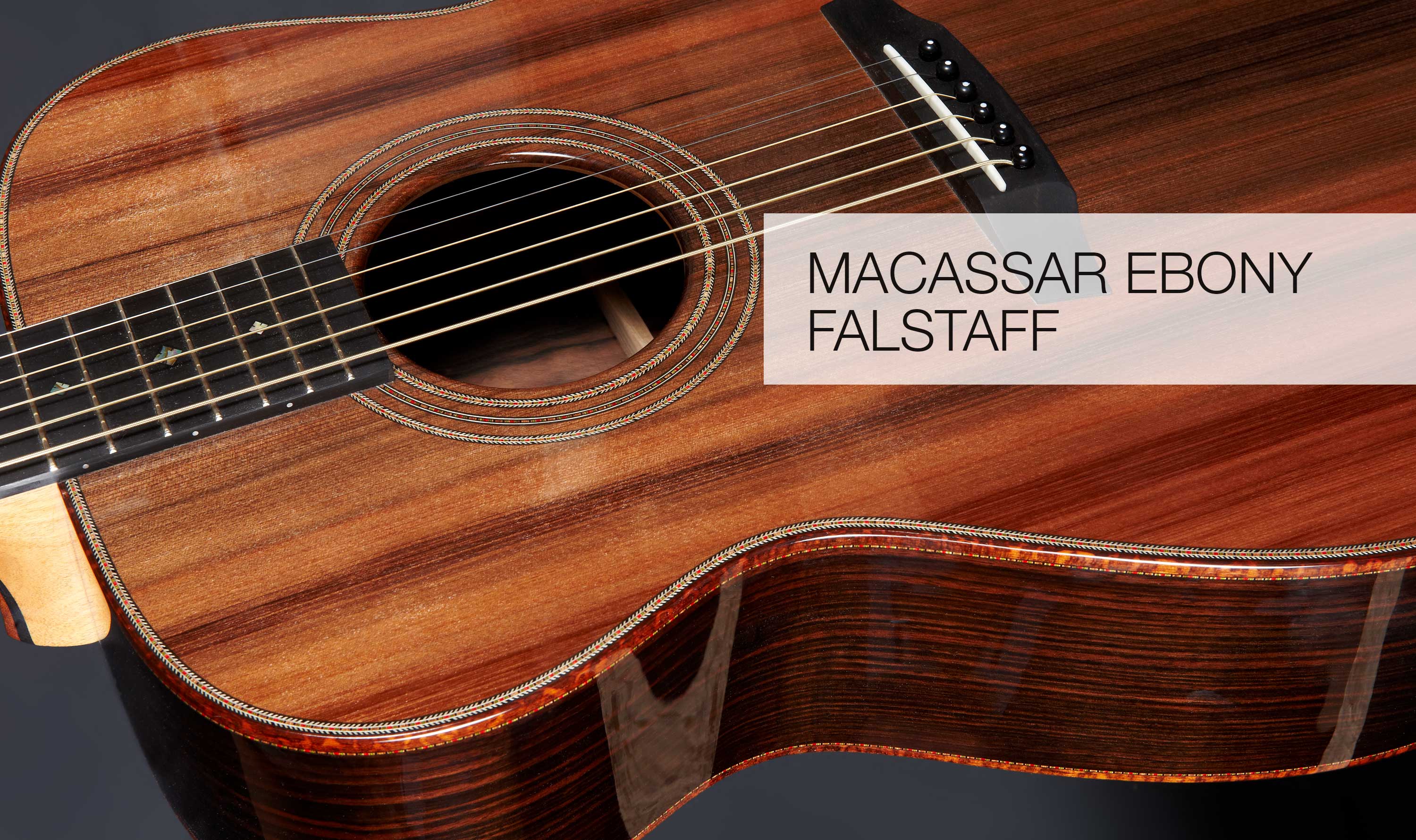

Please note: due to changes in regulations and constant design developments, we sometimes need to change details such as binding and inlay materials.

It is very hard finding the time to make these, but I do feel its the way to get the best of everything in an instrument, and then its a question of matching the guitar with the customer. This guitar has almost been building itself quietly in a corner, little things suggesting themselves as it went along over about 8 months. Macassar Ebony, Sinker Redwood and Snakewood. The centre section of the neck lamination is actually a piece of some unknown timber, most likely Sapele, but it has a figure similar to the Snakewood and with a little bit of stain its a good match. You wouldn't have known if I hadn't told you. Mr Honest, that's me.
The other neck laminations are ebony (Cameroon, not Indian, to meet the Lacey act in the US) and mahogany, with Gotoh 510's on the headstock.
I've talked about Seqouia a lot, I used it quite a lot in the 1970's before it became a "tonewood". Most, or even all of what was growing 30 years ago is still there, getting taller and taller, then falling over, but still nobody is allowed to use any of it. It is one part of the "green" movement that I don't understand. The only Seqouia we can use now has been lying at the bottom of various creeks and docks, which is why it is often reffered to as "sinker" redwood.
It’s the typical sound for these timbers, dark, so dark, but clean and pure. If you imagine a big guitar, full of all the tones you can imagine, then file off all the sharp edges on each of those tones, that's what you get. More Helen Shapiro than Lulu. Showing my age again.
Click on an image to enlarge ...

© 2025 Fylde Guitars. All Rights Reserved